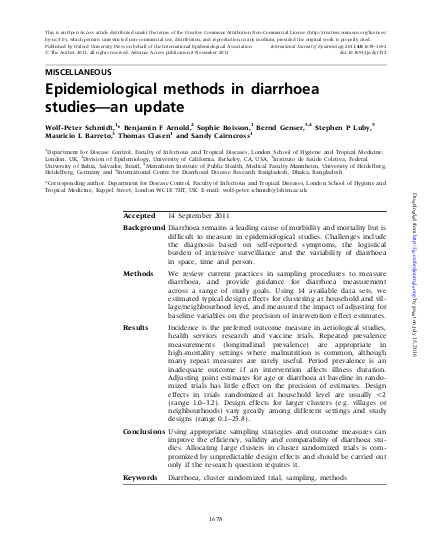
Background Diarrhoea remains a leading cause of morbidity and mortality but is difficult to measure in epidemiological studies. Challenges include the diagnosis based on self-reported symptoms, the logistical burden of intensive surveillance and the variability of diarrhoea in space, time and person.
Methods We review current practices in sampling procedures to measure diarrhoea, and provide guidance for diarrhoea measurement across a range of study goals. Using 14 available data sets, we estimated typical design effects for clustering at household and village/neighbourhood level, and measured the impact of adjusting for baseline variables on the precision of intervention effect estimates.
Conclusions Using appropriate sampling strategies and outcome measures can improve the efficiency, validity and comparability of diarrhoea studies. Allocating large clusters in cluster randomized trials is compromized by unpredictable design effects and should be carried out only if the research question requires it.